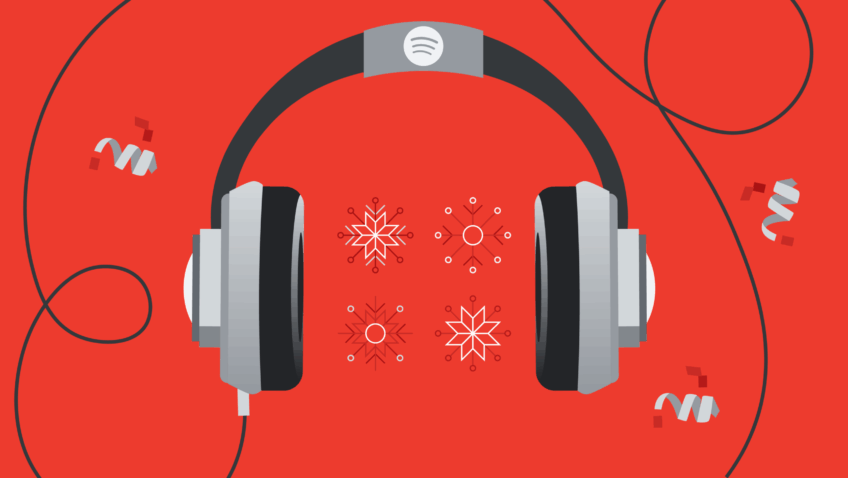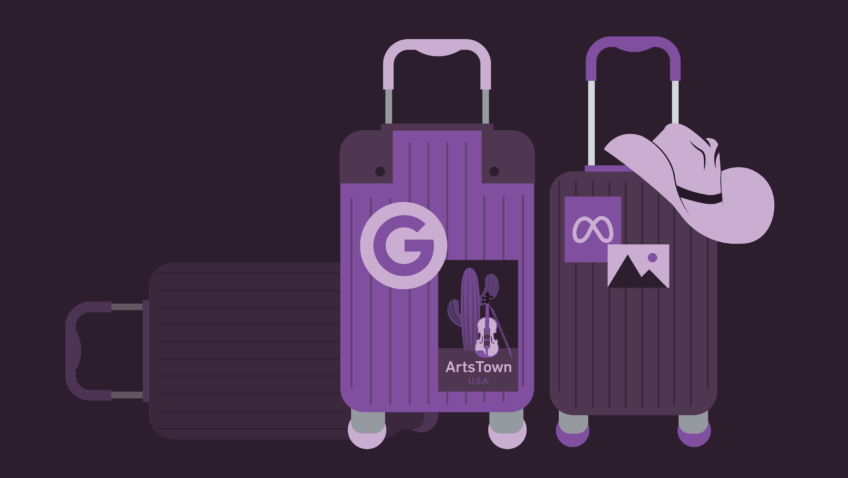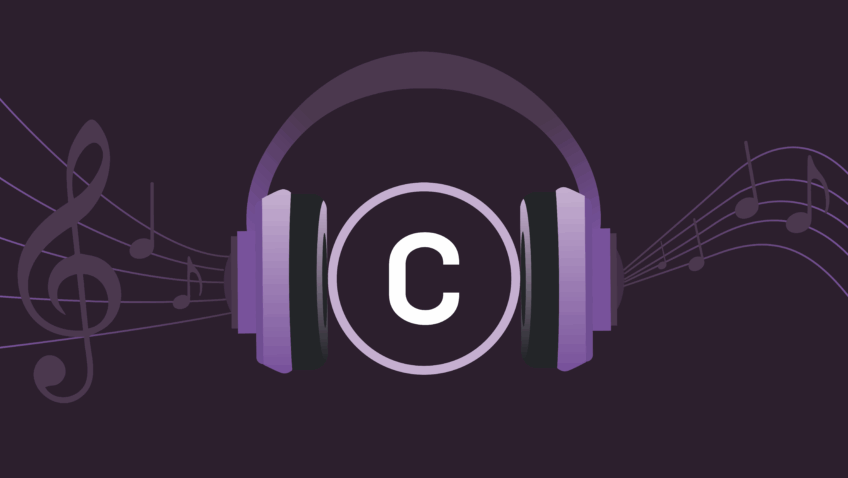First-Party Data Strategy
2023 Digital Priorities
The digital landscape evolves at a rapid pace—so what should you focus on in 2023?
Over the next few weeks, we’ll dive into seven major areas that you should actually prioritize, starting with one of the most important keys to digital marketing success: a first-party data strategy.
It’s no secret that first-party data is the future of digital marketing. With changing privacy regulations and the death of third-party cookies*, the only data within your control is the data you own. Start the new year off right by incorporating a solid first-party data strategy into your digital advertising approach. Combine lead generation and email marketing tactics to build your database and future-proof your organization.
- *On July 22, 2024, Google reversed its decision to deprecate third-party cookies. Here’s the latest guidance from CI on this change.
Why Does First-Party Data Matter?
Digital marketers are catapulting towards a cookieless world, which impacts our ability to target and optimize campaigns. The good news? A strong first-party data strategy can help counteract this shift.
As a refresher, first-party data is data you own and have permission to use. This includes information collected along your purchase path or the tracked behavior of users on your website or apps. And as more and more browsers disable third-party data collection by default, now’s the time to grow the data you own.
It sounds intimidating, but at its core, a first-party data strategy is a more intentional approach to what you already know as permission marketing: building trust with consumers and delivering personal, anticipated, and relevant content to the people who care.
Collect First-Party Data via Lead Generation Campaigns
Curate a treasure trove of first-party data with lead-generation campaigns. These campaigns are powerful, cost-effective tools for collecting information from audiences—below are steps to help you get started.
Carve out a budget. Invest money in attracting new leads—a first-party data strategy needs to be one of your top priorities in 2023, so an adequate budget for paid lead-generation campaigns is necessary for success.
Diversify channels. Experiment with various platforms to reach as many new audiences as possible. Meta, the Google Display Network, YouTube Ads, and LinkedIn Ads offer lead collection tools. You can also add a lead generation extension to your Google Grant account and paid search campaigns.
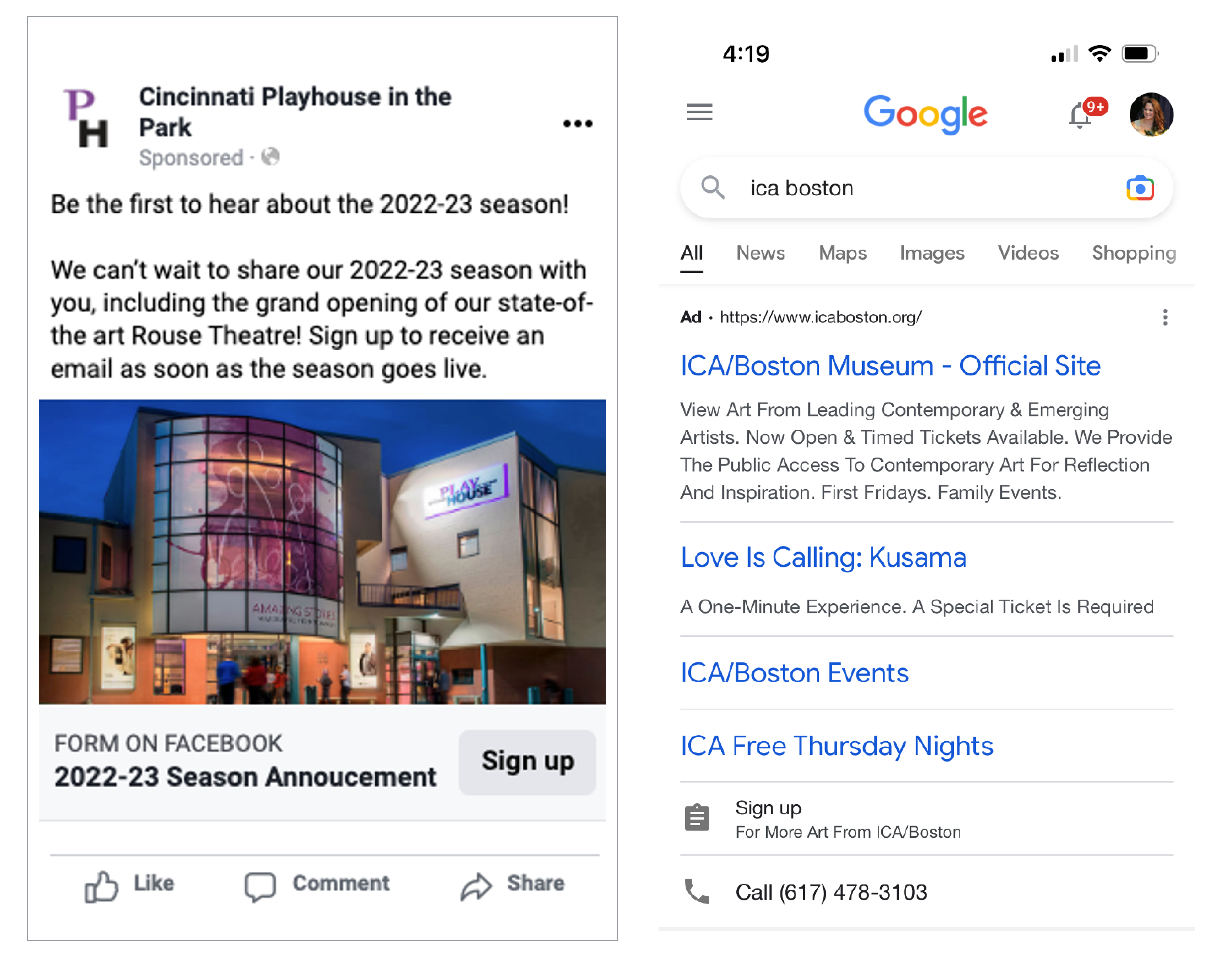
Ask the right questions. Simplicity is key when building an interest form in platforms. We recommend asking for essential information: first name, last name, and email address. You can always send a follow-up email asking them to supply additional information, like zip code or communication preferences, but now is the time to keep it short and sweet.
Make it a fair trade. These days we’re all facing a barrage of digital content and packed inboxes. As a result, people are increasingly hesitant to share their email addresses with businesses. The key is to deliver enough value that consumers feel it’s a fair trade. A Google study found that 90% of consumers are willing to share their information when brands are responsible with their data and use it to deliver value.
Here are a few examples of what you could offer in exchange for an email address:
-
- Discounts or early access to tickets
- Instant customer service via chatbot
- Your venue’s Wi-Fi password
- Free content like virtual performances or downloadable materials
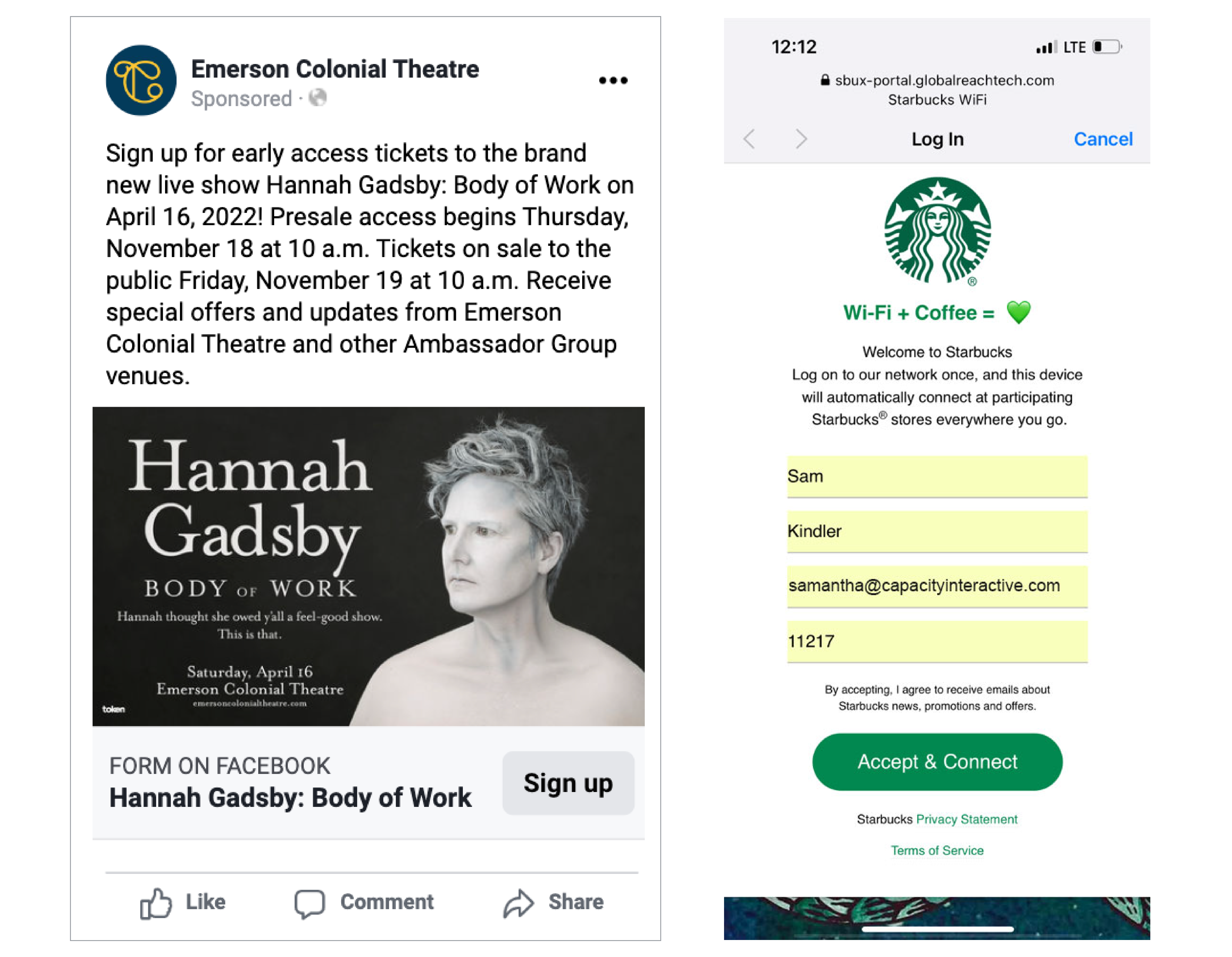
See it in action. Cincinnati Playhouse in the Park ran a lead generation campaign leading up to their 2022–2023 single ticket on-sale date. They used Meta’s in-platform lead collection tools to encourage email signups on Facebook and Instagram.
The CI team optimized this two-week campaign for spend efficiency, resulting in a $2.11 cost per lead which was lower than average across CI clients. The lead rate was also higher than average at 0.71%, which indicates a strong interest in the organization’s programming and an appetite for early access—a great incentive for top-of-funnel audiences.
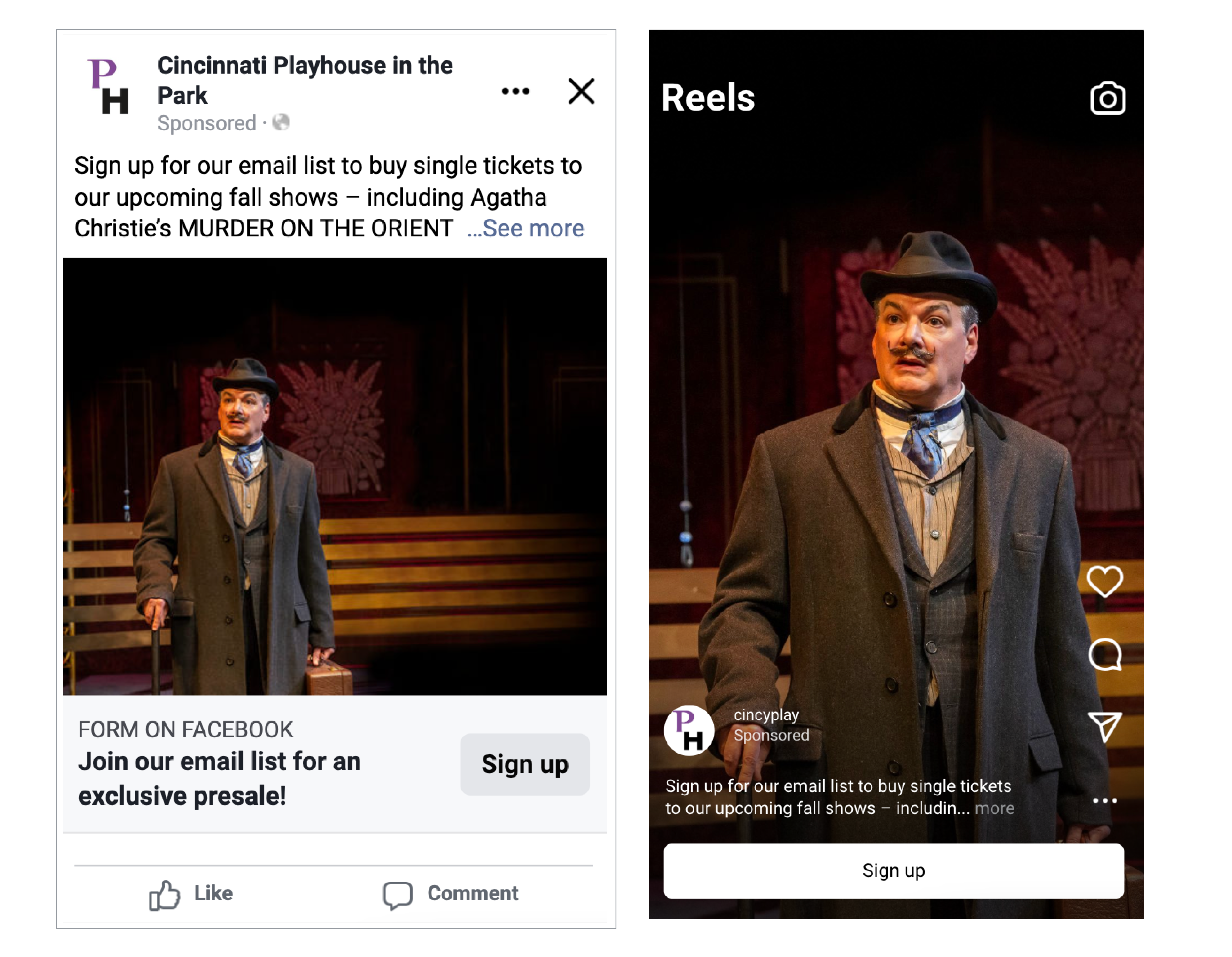
Don’t Ghost New Subscribers
Now that you’ve collected new leads, it’s time to roll out the red carpet via a welcome email. An initial “welcome email” is critical to starting your relationship meaningfully.
The majority of consumers expect to receive a welcome email immediately after signing up for a list, so triggered email technology will be your friend here. Follow the Scottish Ballet and include these three things for a knock-out introduction to your organization:

Confirm that someone subscribed. This is key to increasing your deliverability score. Don’t leave new leads thinking, “how did you get my email?” when you land in their inboxes for the first time. You should also set expectations for the types of content they will receive and how often.
Remind them where or why they signed up. Did they attend a recent performance? Express interest in your educational programs? Make note of that, and ensure the copy aligns with their interests. Relevant content goes a long way in building relationships with your audiences.
Set preferences. If your organization offers a variety of programs, allow subscribers to set their own communication preferences. For example, what topics do they want to hear about? Perhaps someone loves classical dance but not modern, or they just want to hear about your excellent summer camps. By offering your audiences an extra level of control, you’re collecting more first-party data to leverage later.
Remember: This is just the beginning of your conversation. Keep those relationships blooming with personal, anticipated, and relevant communication. Use first-party data to segment email lists, include first names in subject lines, and serve content based on buyer behavior.
CRM Hygiene is Key
Much like eating your vegetables, maintaining your CRM hygiene is essential for a first-party data strategy—even if it’s not always fun. Follow these guidelines to make sure your leads are well cared for.
Tag new leads in your system. This is crucial so you can segment communications and measure the effectiveness of your first-party data strategy.
Establish good naming conventions. Be consistent across CRM lists and email campaigns. This will help you get to the data you want quickly and easily.
Consider how long audiences should stay on your list. This is something you can decide within your organization. If users don’t engage over a certain period, try sending them a re-engagement email asking if they still want to receive messages, like the Monterey Bay Aquarium below.

Measure Results in an iOS15 World
With your email marketing strategy, it’s important to see how your emails are performing. Remember that email metrics will look slightly different thanks to Apple’s mail privacy protection (MPP). You’ll need to redefine KPIs and dig deeper into the data to measure campaign success.
Refocus on measures that matter. Artificially inflated open rates are the unfortunate result of iOS15 and Apple’s MPP. Don’t be fooled by sky-high open rates; they don’t necessarily indicate engagement. Instead, zoom in on more accurate measures of success, like clickthrough rates, unsubscribe rates, and bounce rates.
Go beyond email metrics. Make sure your email service provider is connected to Google Analytics so you can track additional metrics like conversion rates, engagement rates, web sessions, and revenue.
Don’t fall into the comparison trap. Success will look different in every organization. No two venues have the same list size, email cadence, and level of data hygiene. So set your benchmarks. Take stock of where you’re at, write down your results, and track your progress as you make those changes so you can react in an iterative way to what is resonating with your audiences.
The Takeaway: First-Party Data Now
Lead generation and email marketing are your keys to unlocking more first-party data. Just ensure you deliver real value in exchange for a person’s information and you use their data to build relationships and deepen connections. You’ll accrue countless new fans and prepare your organization for a cookieless future.
Ready to start your first-party data strategy? Let’s talk about lead generation campaigns and how we can improve your email marketing in an iOS15 world!



